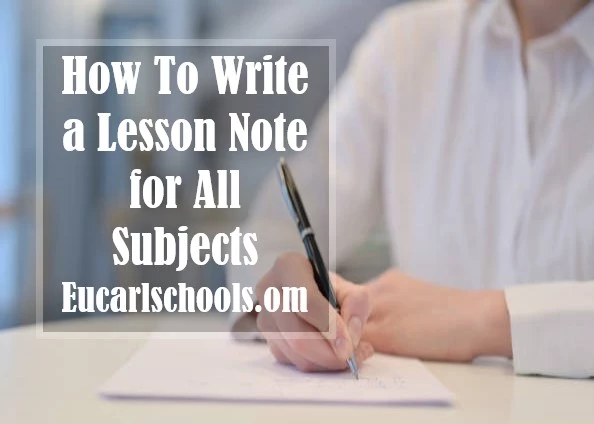What are the Important Features of an Informal Letter?
Before we set our courses to find out what the features of an informal letter are, you must understand that letters generally were the first media of communication used by humans. Letters had on them written characters, signs, and symbols, which represented specific information the writer of the letter wanted to pass across to the person who would receive them.
Before the start of this social media age, where we had quick messaging applications that carry information at a mind-blowing speed, letters initially took several days and sometimes weeks to reach the recipient. In fact, to cut down on the time it took for letters to reach those meant for, people adopted the use of birds. Yes, you heard that right!
So, in this article, we will be narrowing down our focus to informal letters and the features of an informal letter, and how it is different from the other types of letters. Bear in mind that there are two general types of letters: informal letters and formal letters. However, in specific settings, the third type is the semi-formal letter.
Meaning and Features of an Informal Letter
What are informal letters?
First, knowing what formal letters are would go a long way to identifying the features of an informal letter. Informal letters are letters that bear personal information which can be sent to close friends, relatives, acquaintances, or generally anyone whom we have no sort of professional relationship with.
As we would see in the subsequent paragraphs, because there exists a causal relationship between the sender and the recipient, the features would have to reflect a conversational style. Most times, the beauty of informal letters is the detours here and there, contrary to the direct style seen in formal letters.
A typical example of an informal letter is a letter you write your uncle when you wish to inform him about your admission into the university. Your uncle is your relative and falls under those you have a close relationship with, especially if you talk to him regularly.
Another example of an informal letter is writing to your mum recounting your experience so far in the university. This is quite different from an application letter for a teaching job which is an example of a formal letter.

Features of an Informal Letter
Every letter, whether formal, informal, or semiformal, has features that distinguish them from the others. In this paragraph, we will be looking at the features of an informal letter.
Language style
With informal letters, one feature that stands out when you write them is that you aren’t boxed with so many rules of engagement. There is a greater room to which you can express your emotions ranging from slang to symbols, as long as both the sender and recipient can understand.
Format
Every letter has a structure to how they must be written; informal letters are no exception. Among the features of an informal letter is the unique format.
The format of an informal letter includes the address, the date, the salutation, and the actual content of the letter, which is sometimes referred to as the body of the letter.
Sender’s Address
One of the prominent features of an informal letter is that there is a single address, and it is written in the topic right corner. This is a stark contrast to a formal letter like when you want to write a winning business proposal letter to a possible business partner, where writing two addresses is a given.
Did you say what the essence of writing an address when the two parties know each other is? Well, the recipient of the letter, upon seeing the address of the sender, would know which address to send a reply to even when the identity of the sender is known.
Date
The date is one of those confusing features of an informal letter. This is because there are two accepted modes of writing the dates, often muddled up by writers. At this juncture, you should know that the dates are written beneath the sender’s address.
And to the two modes of writing dates, there is the British system which follows the day, month, and year order. A good example is 16/09/2022. The American system is the other mode, but it follows the month, day, and year order. An example is 09/16/2022.
Salutation
Salutations are usually written in an informal letter, beneath the date, but in the left corner. They begin with “dear”; what follows after the dear determines whether it is a formal or an informal letter. The salutations of formal letters are Dear sir/ma, and for informal letters, it is Dear (Name of the person).
Body of the Letter
You can as well say this is the meat of the letter. It is where the message to be communicated is placed. For the body of an informal letter, there is first the greetings, then the reason for writing, and of course, the conclusion.
Greetings
This is one of those major features of an informal letter that sets it apart from the other types of letters. Since there is fondness between the sender and the recipient, the greetings of an informal letter should be centered around what the two parties can relate to.
For example, if a daughter writes to her dad about the pressures of university life, an appropriate greeting could be: “Daddy, how is mummy and brother Somto doing? Is Charles still in daycare?”
Reason for Writing
For an informal letter, the sender can afford to beat about the bush and talk about things almost irrelevant to the reason for writing the letter. Remember, when writing an informal letter, the conversational tone allows for many digressions.
Conclusion
Out of the many features of an informal letter has to be the conclusion. It would be best if you give a befitting end to the letter, and since it is a friendly letter, you must close with a sentence that shows camaraderie.
Signature
The last thing to tidy up once you are done writing an informal letter is the signature. While this doesn’t mean you should append an actual signature, you must add your name, especially the one that your recipient is conversant with.
Conclusion
We have said so much about informal letters already; just so that you know, inasmuch as you have the freedom to express yourself doesn’t mean you should write with poor grammar. Poor English grammar can distort the reading flow and the message being passed is lost.






